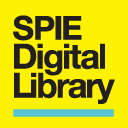Molecular imaging of human tumor cells that naturally overexpress type 2 cannabinoid receptors using a quinolone-based near-infrared fluorescent probe
Abstract
Abstract. Cannabinoid CB2 receptors (CB2R) hold promise as therapeutic targets for treating diverse diseases, such as cancers, neurodegenerative diseases, pain, inflammation, osteoporosis, psychiatric disorders, addiction, and immune disorders. However, the fundamental role of CB2R in the regulation of diseases remains unclear, largely due to a lack of reliable imaging tools for the receptors. The goal of this study was to develop a CB2R-targeted molecular imaging probe and evaluate the specificity of the probe using human tumor cells that naturally overexpress CB2R. To synthesize the CB2R-targeted probe (NIR760-Q), a conjugable CB2R ligand based on the quinolone structure was first prepared, followed by bioconjugation with a near-infrared (NIR) fluorescent dye, NIR760.In vitro fluorescence imaging and competitive binding studies showed higher uptake of NIR760-Q than free NIR760 dye in Jurkat human acute T-lymphoblastic leukemia cells. In addition, the high uptake of NIR760-Q was significantly inhibited by the blocking agent, 4-quinolone-3-carboxamide, indicating specific binding of NIR760-Q to the target receptors. These results indicate that the NIR760-Q has potential in diagnostic imaging of CB2R positive cancers and elucidating the role of CB2R in the regulation of disease progression.
Topics
Luminescence ; Molecular imaging ; Near infrared ; Receptors
Zhiyuan Wu ; Pin Shao ; Shaojuan Zhang ; Xiaoxi Ling and Mingfeng Bai
“Molecular imaging of human tumor cells that naturally overexpress type 2 cannabinoid receptors using a quinolone-based near-infrared fluorescent probe”, J. Biomed. Opt. 19(7), 076016 (Jul 18, 2014). ;http://dx.doi.org/10.1117/1.JBO.19.7.076016







